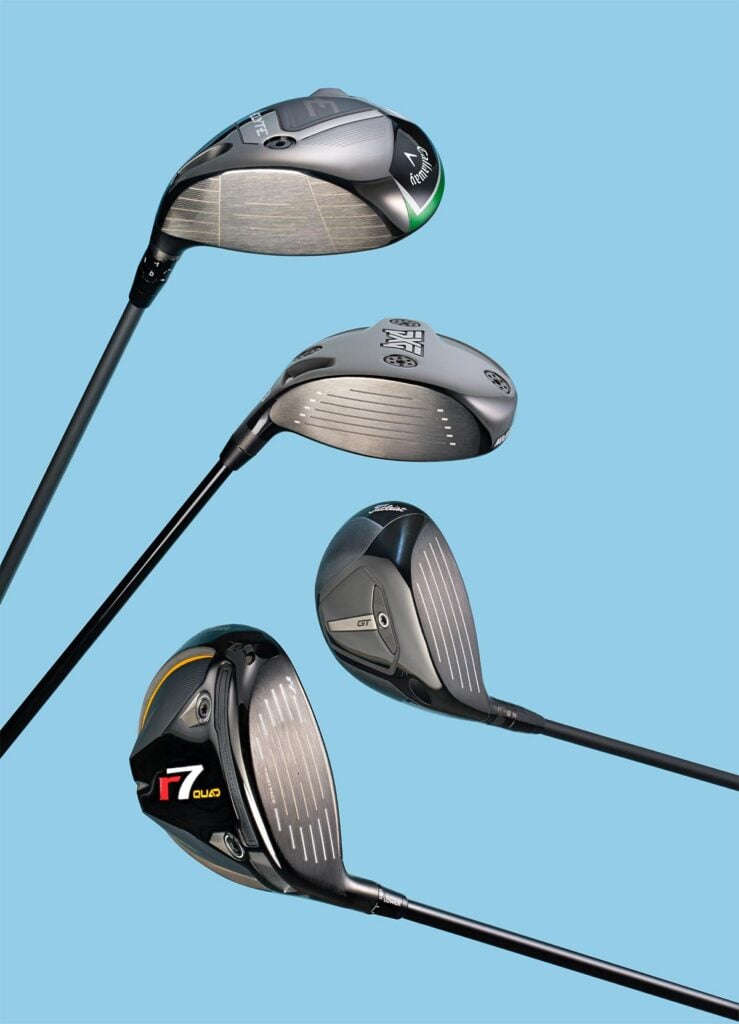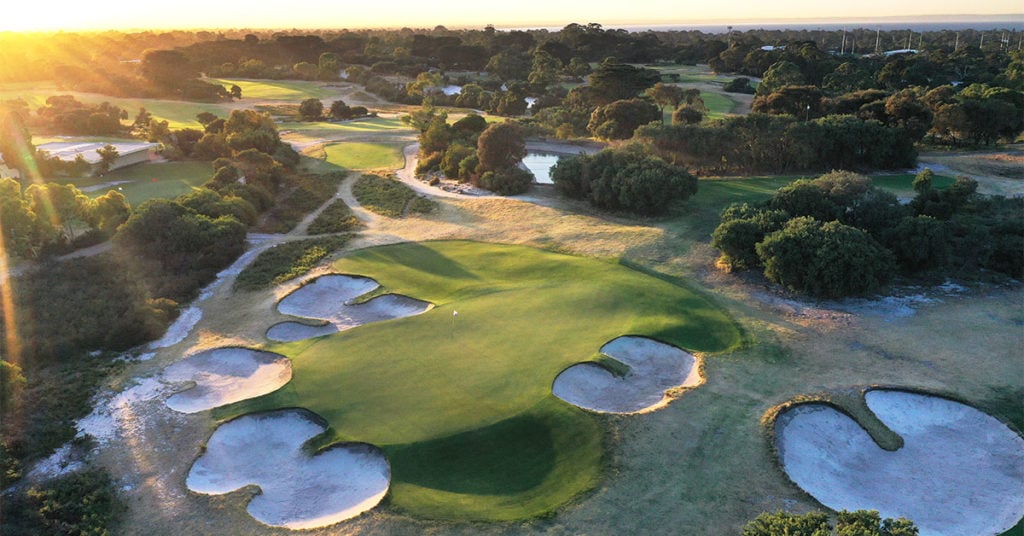Mark Twain once said, “A baby is an inestimable blessing.” Whether that holds true for everyday players using the baby – or mini – drivers popping up on tour and on retail shelves is a different thing altogether. The recent mini-driver craze has been a trend (or a fad, depending on your viewpoint) more than a decade in the making. Ever since Phil Mickelson unleashed the Callaway “Phrankenwood” at the 2013 Masters and followed it by using a 13-degree version of the company’s X Hot 3Deep in winning the
Open Championship at Muirfield later that year, smaller drivers have been something of a thing, albeit on and off. ▶ ▶ ▶

Equipment manufacturers, mostly TaylorMade, have dabbled in the mini-driver game in the marketplace with limited success. Now, however, it seems almost everyone wants in. Recent introductions from Callaway, PXG, TaylorMade and Titleist [above] indicate the category might have legs.
If adoption among the masses is anything like it is on tour, expect some of these clubs in the bags of your weekend foursome. At this year’s Players Championship, 20 mini-drivers were in play, with Justin Thomas and Tommy Fleetwood among those wielding them.
Being popular or trendy, however, does not always translate to usefulness. Tour pros are skilled enough to handle pretty much any stick expertly. Everyday players are different. The oversize head of a driver offers needed comfort and forgiveness. The loft of a fairway wood provides necessary launch. Is there even a need for a mini-driver?
Chandler Carr, manager of product creation for TaylorMade, is steadfast that there is an audience for them and good science behind it.
“A smaller head allows us to do more with the mass to create an incredibly low balance point,” he says. “The centre of gravity (CG) is in a good position, so your mis-hits aren’t as penalising. You can have a lower tee height; you have a smaller head size but still a relatively large effective hitting area, and then a shorter shaft. You’re kind of ticking all the boxes of more repeatable contact by shrinking your driver.”
The construction of mini-drivers is quite different from drivers and 3-woods. A driver head is typically 460 cubic centimetres and the shaft 45.5 inches long. A 3-wood is about 180cc and 43 to 43.5 inches. As you would expect, the mini is in between, at 280 to 340cc and about 43.75 inches [see an example of relative head size, below].

The larger face on a mini-driver makes it more forgiving than a 3-wood, which is a plus for golfers dealing with contact issues, particularly low on the face. Also, opting for a larger face makes catching a piece of the face easier on severe mis-hits. The longer shaft on the mini increases the potential for extra distance, too.
But beware, the lofts are stronger on minis, as low as 11 degrees and up to 13.5 degrees. For players who struggle to get shots airborne, this can be a problem. However, for those with difficulty hitting the driver high enough, it could make for a viable tee-shot option, albeit with a forgiveness sacrifice. That is leaving some clubfitters wary.
“A few people definitely come in looking for it,” says Woody Lashen, co-owner of Pete’s Golf, a perennial Golf Digest 100 Best Clubfitter. “However, when we explain we can make a 460cc driver at 43 inches that will help their control problems a lot more than a
mini-driver, that’s what they buy.”
Lashen’s facility, however, is one of the premier club builders in the game and gets the internal weighting right. A shorter driver is not as simple as just lopping a couple of inches off the shaft. If that’s the alternative, the mini-driver is the better move, Carr says.
“Your moment of inertia is greater with a shorter driver, but your efficiency is not as good,” he says. “And your CG projection on a higher-lofted driver is higher. So now this golfer with a 43-inch shaft and a 12-degree driver head is going to be hitting it shorter than the mini-driver because it’s spinning too much. The recreational golfer needs distance, and the launch and spin are more efficient in a smaller head.”
Ultimately, the decision is a personal one. Link up with a qualified fitter to understand if there’s an edge with one over another. Sound advice – whether about babies or golf clubs – always saves you headaches in the long run.
Photography by josh dickinson




